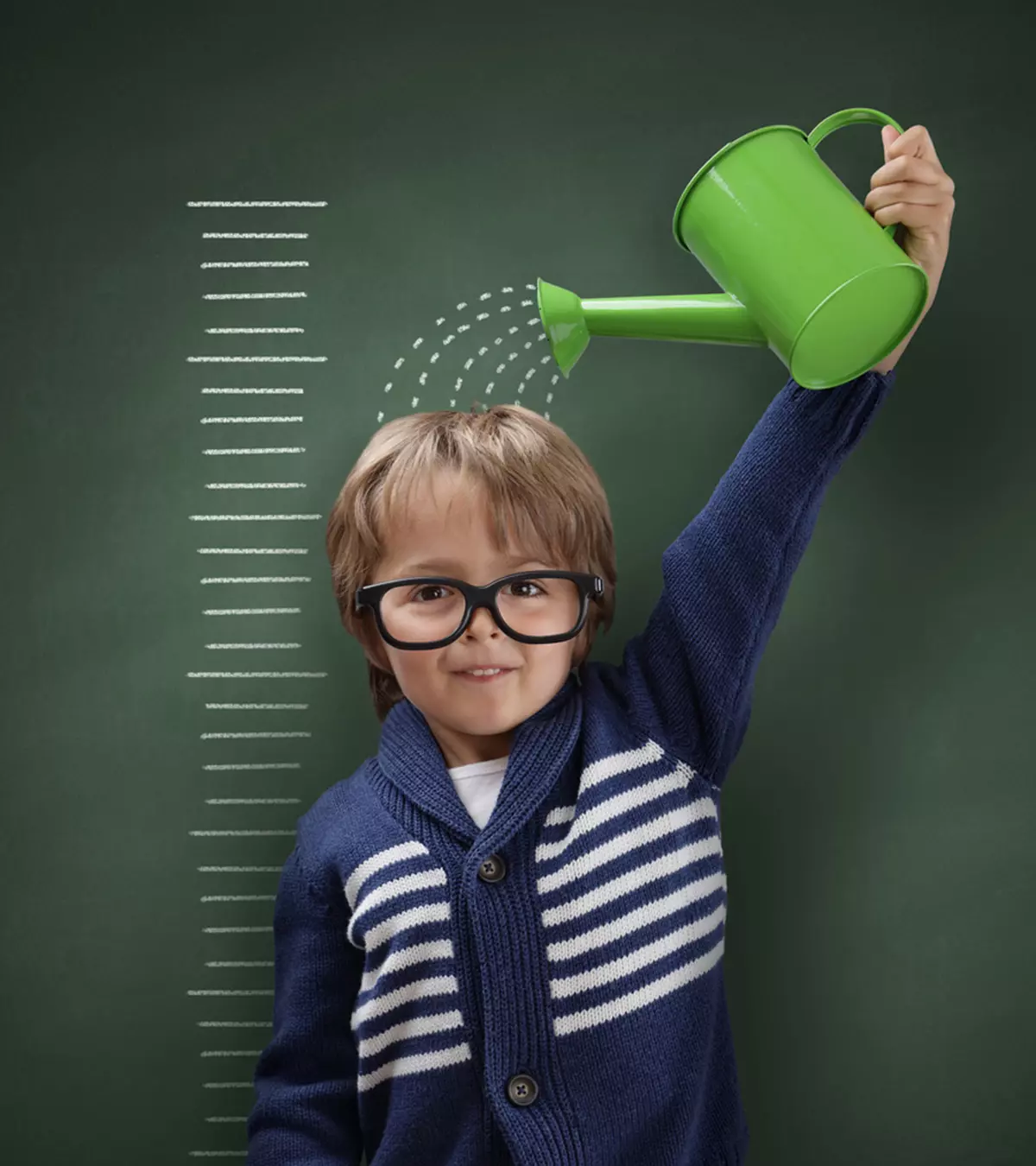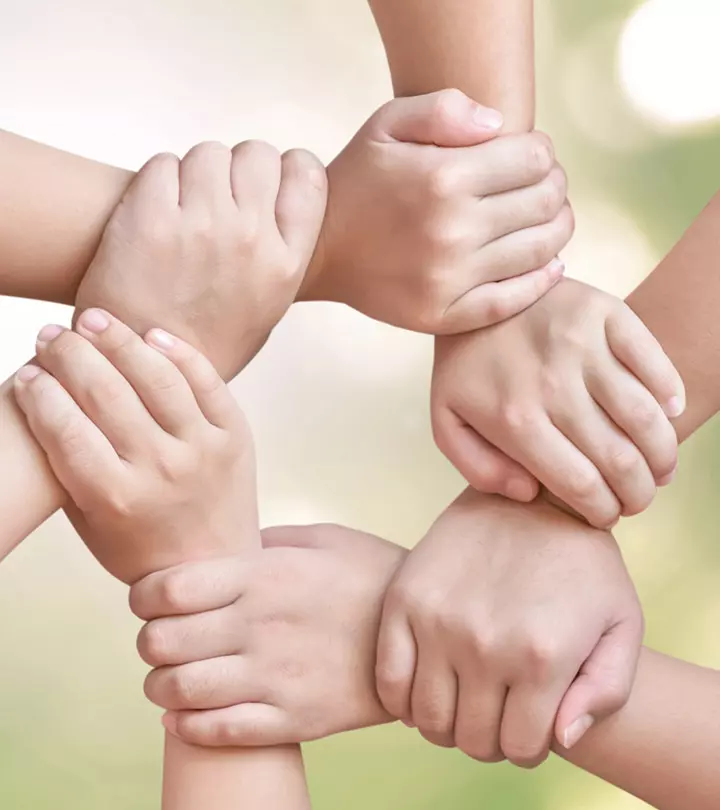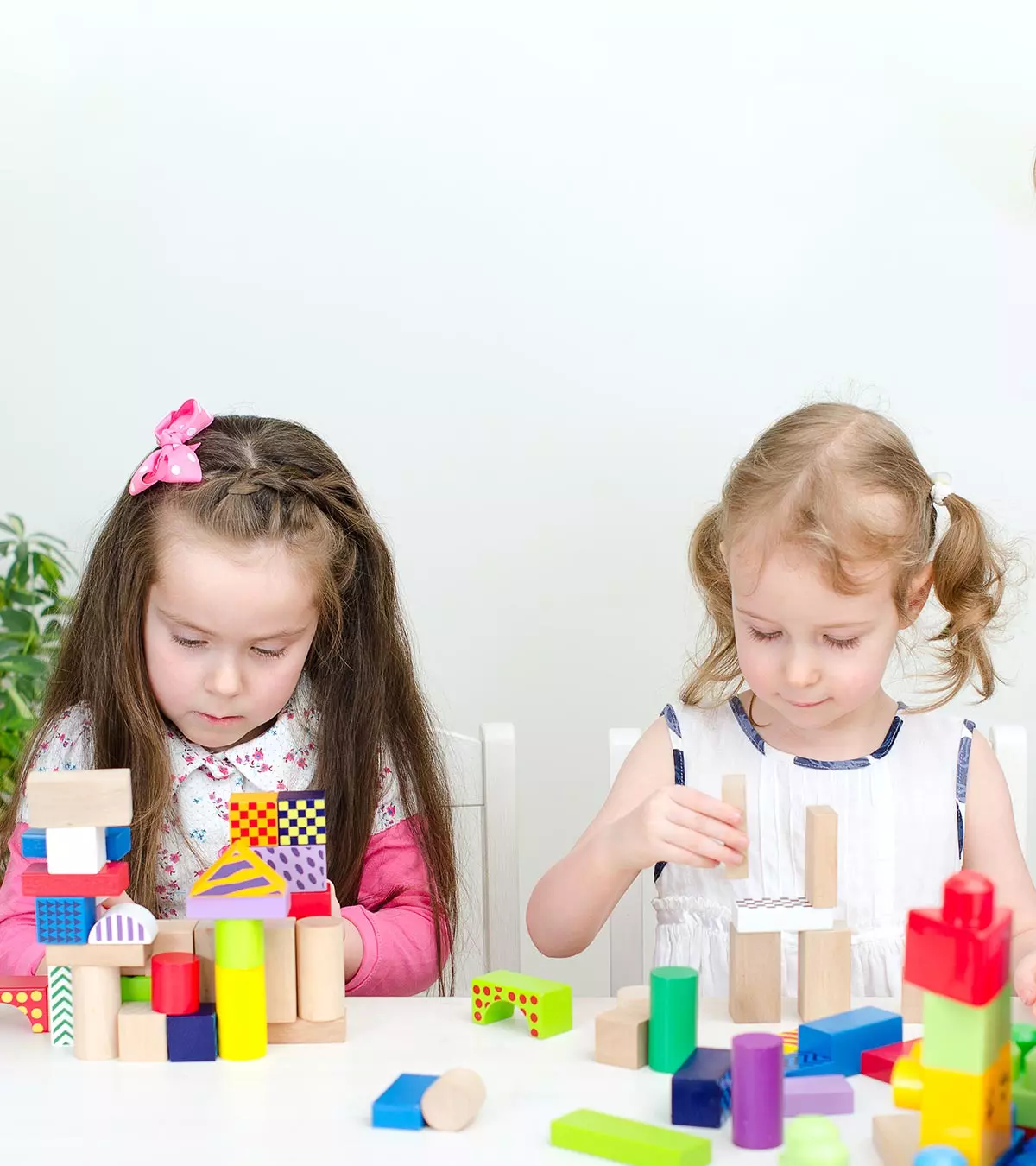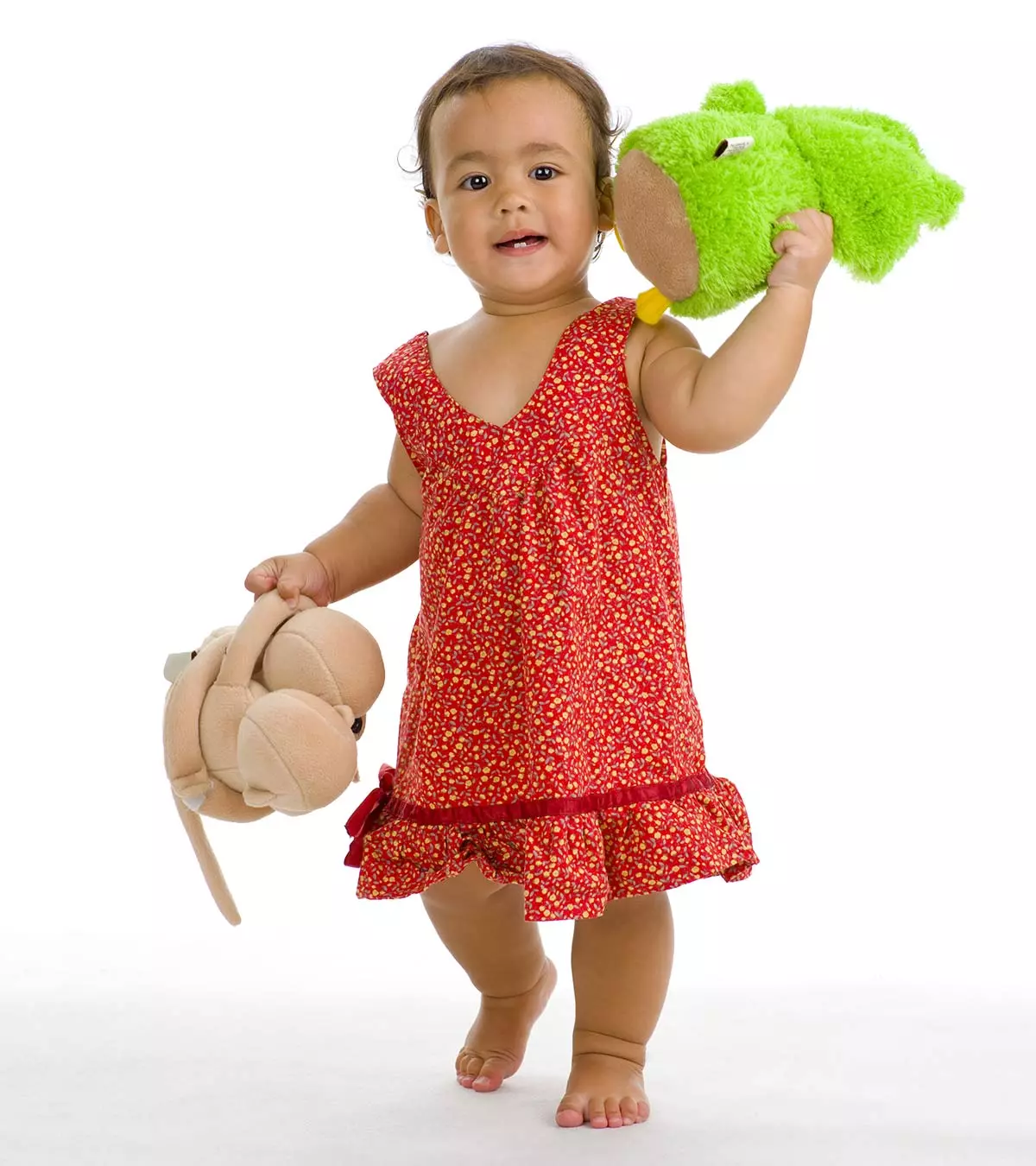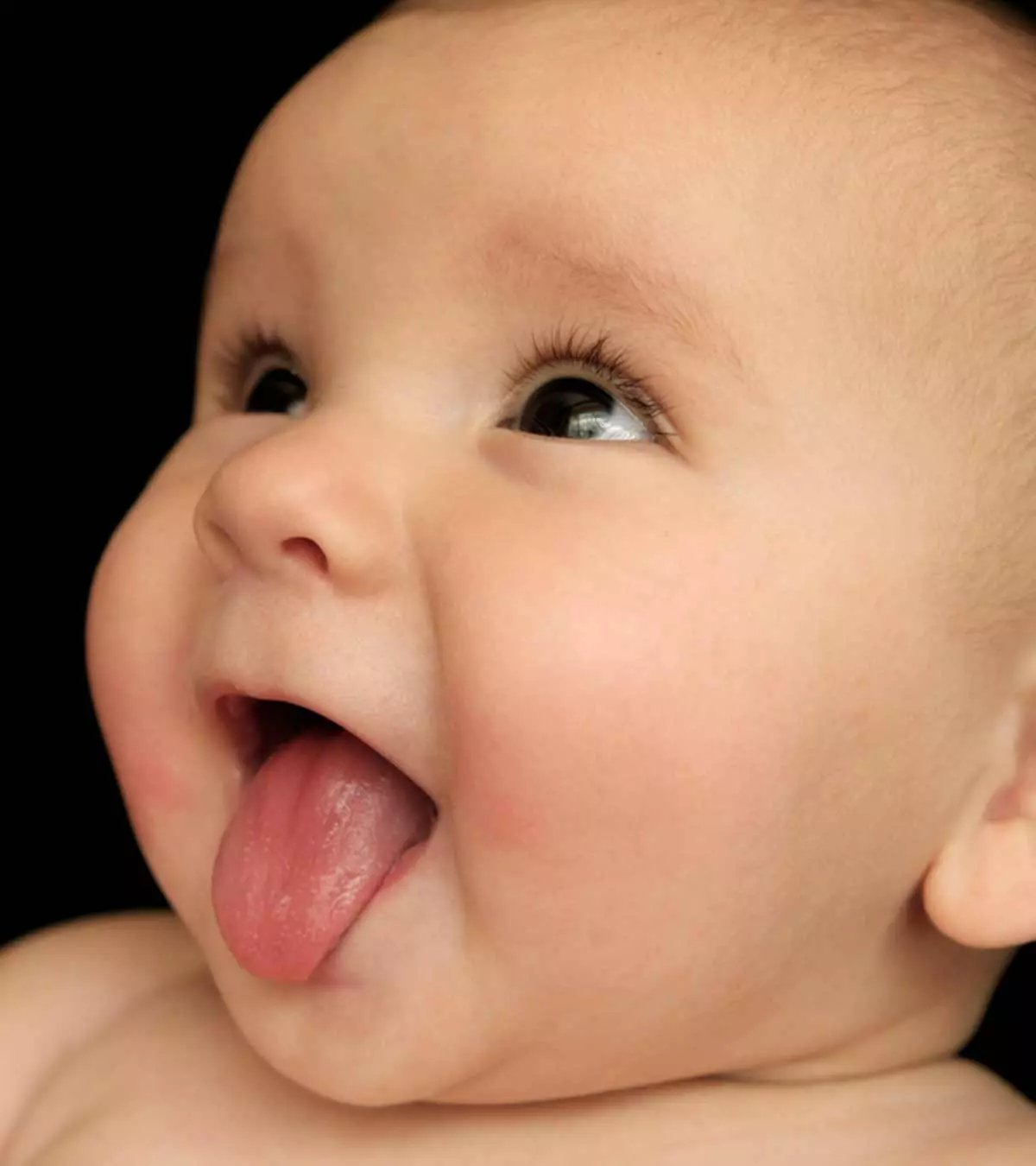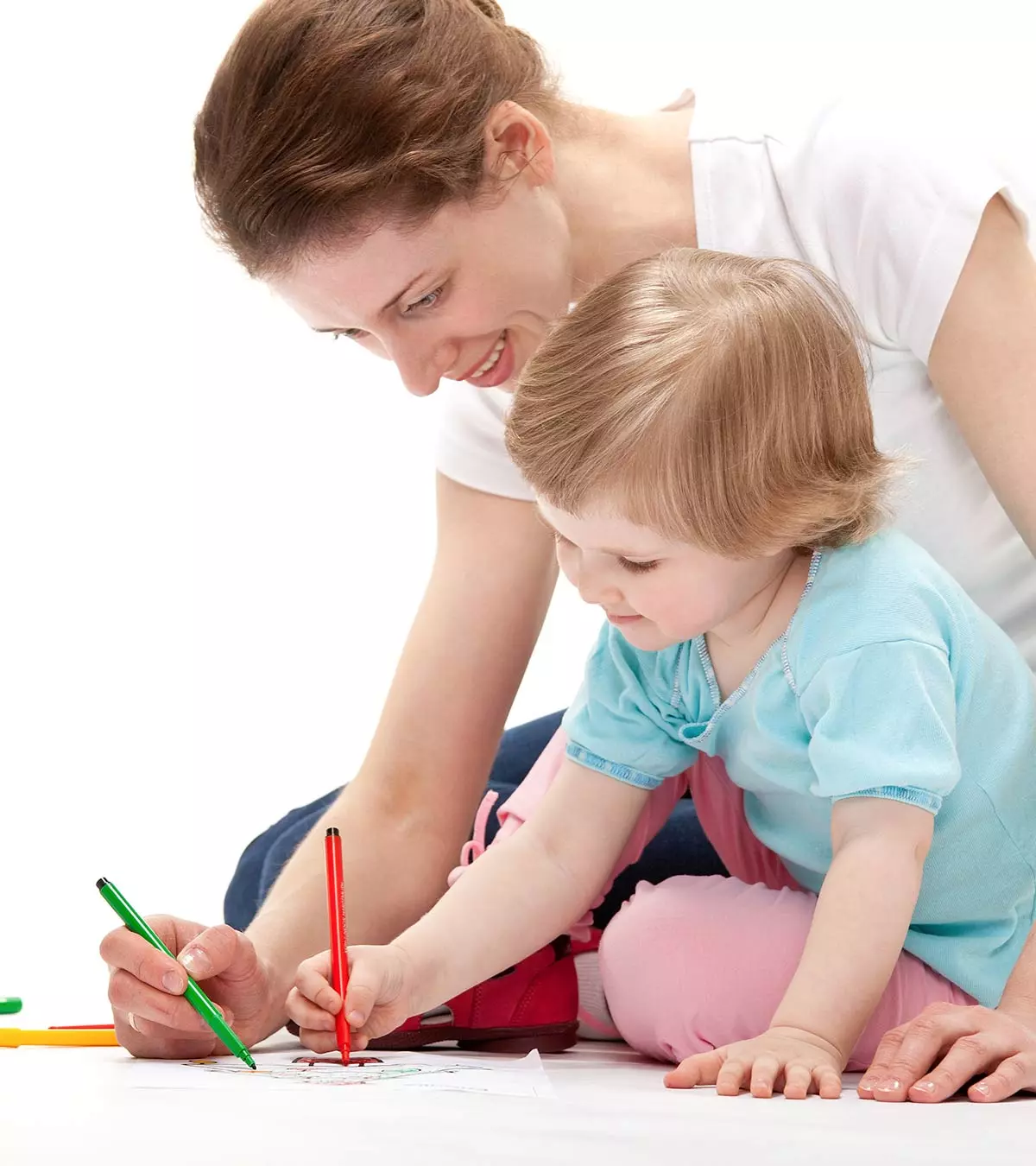
Image: iStock

It only takes 12 months for your baby to grow from a newborn to a toddler. Baby’s development month by month accelerates, and each subsequent month offers new developments. Understandably, parenting could be a challenging experience and all new parents are often curious about what to expect next from their child and how to tell if their child’s development is on track. There is a huge window for a newborn to achieve each developmental stage, regardless of how quickly they develop.
Crawling, babbling, teething, and grabbing are just a few of the milestones your baby will achieve in the first 12 months. It is common for some babies to achieve a milestone sooner, taking more time to achieve another later.
Read on to know what to expect each month during your baby’s first year and what developmental traits can be considered normal in babies.
Key Pointers
- Babies achieve milestones such as crawling, babbling, teething, grabbing, and emotional reactivity in their first 12 months.
- In the first four months, babies make eye contact, cry for help, concentrate on people and their voices, and enjoy the play.
- Months six to eight are characterized by rolling over, assertiveness, object transference, raspberry blowing, supported sitting, babbling,, and improved dexterity.
- Between months nine and ten, babies can sit without support, clap, respond to their name, become anxious or shy around strangers, climb stairs, imitate gestures, and display a range of emotions.
- Months eleven and twelve are characterized by weight gain, saying “mama” and “dada,” occasional non-cooperation, standing without support, showing temper tantrums, and having a sense of humor.
Growth Milestones – Baby Development Month By Month
Below is the necessary information regarding baby growth month by month that you should be aware of to make your motherhood journey more emotionally rewarding.
1st Month:

- Your baby is growing fast
- Makes eye contact
- Cries for help
- Reacts to parents’ voices and smiles
Note:
Make sure to support your baby’s neck and head when holding.
 Quick fact
Quick fact2nd Month:
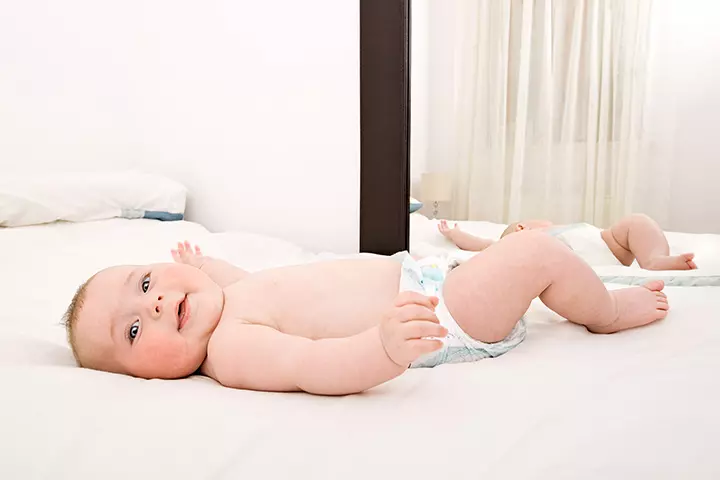
- Your baby becomes more plump
- Learns giving social smile and studying faces
- Concentrates on looking at people than objects
- Murmurs and gurgles in response to sounds
- Expresses anger
3rd Month:
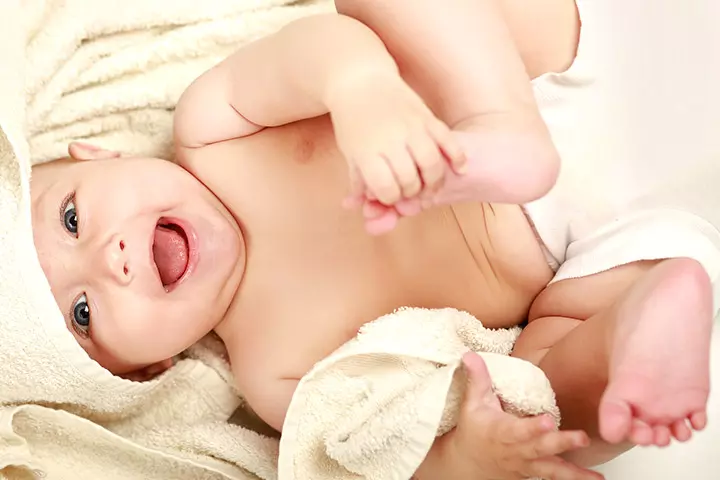
- You will see a remarkable pattern in your baby’s schedule
- Smiles back when you smile, the lovely smile involves the whole body – arms lift up, hands open wide and legs move
- Smiles and gurgles to get your attention
- Imitates facial expressions and certain movements
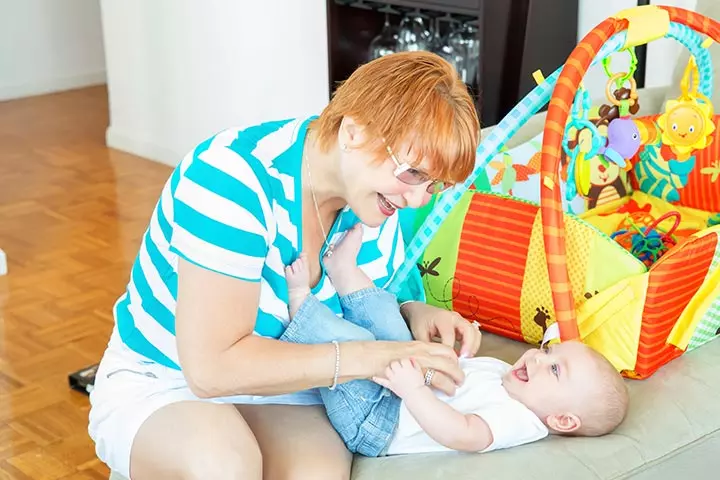
- Pushes up arms when lying on stomach
- Motor skills enable them to grab objects
- Laughs out aloud
- Enjoys playing and cries when playtime is disrupted
 Quick tip
Quick tip5th Month:

- Becomes assertive
- Starts rolling in one or other direction
- Learns to transfer objects from one hand to another
- Blows spit bubbles
- Cries for mom or dad if they are out of sight
- Loves to play during feeding
6th Month:

- Rolls over both the ways
- Starts to sit
- Scratches small objects to reach them
- Babbles and makes noises like squeals and murmurs
- Tends to be either gentle or active
 Did you know?
Did you know?7th Month:
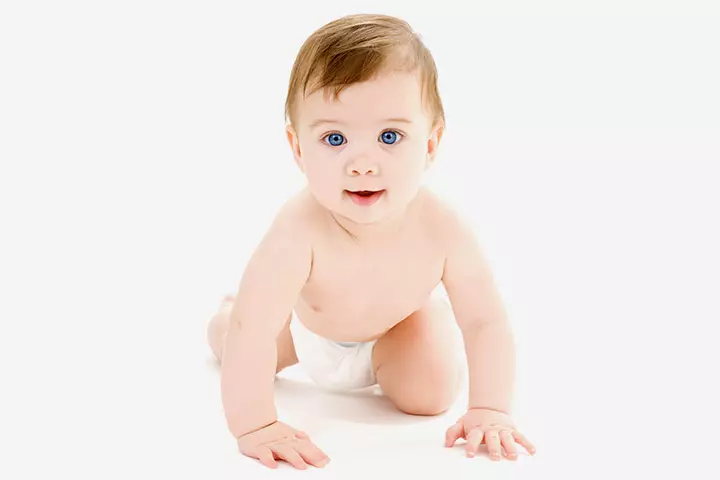
- Starts crawling, scooting
- Learns to use thumb and fingers
- Enjoys being in social environment
- Changes in behavior may present in the form of anger
- Mimics adults sounds
8th Month:
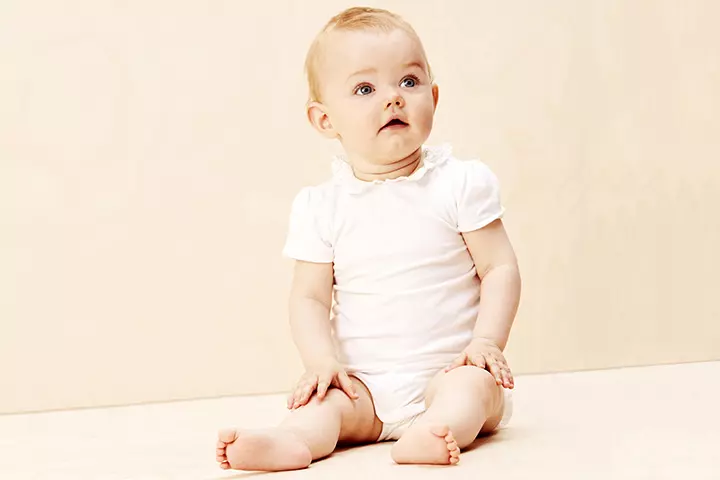
- Sits perfectly without any support
- Tries clapping hands
- Responds when you call your baby by name
- May get anxious or shy with strangers
9th Month:
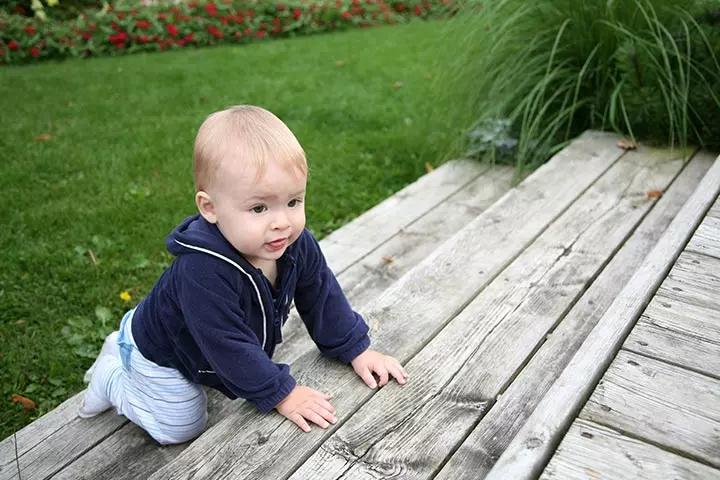
- Tries to crawl and climb stairs
- Imitates gestures that others make
- Likes playing with the parent (with mom when she is cooking)
- Learns object permanence
10th Month:

- Tries to stand
- Self-esteem begins
- Responds to clapping
- Shows all moods like happy, sad and anger
Recalling her daughter Everly’s tenth-month milestones, Helen, a mother of two, remarks, “I can’t believe we are two months away from her first birthday. Little Miss is a busybody these days! She is fully crawling. She started pulling up to stand shortly after she figured out crawling and made her way around tables, the ottoman, the couch, and her crib. She prefers to feed herself pieces of food. She has seven teeth now and is constantly chewing her fingers. She babbles non-stop: Ma-ma, da-da, na-na, ga-ga, ra-ra, ba-ba, blah-blah, dis, gler, and so many little combinations that I love. She has also started yelling/screaming. Whenever she sees her Maxton (big brother), she smiles from ear to ear. She makes this scrunchy smiley face that always makes us laugh (i).”
 Quick fact
Quick fact11th Month:

- Does not allow you reading books or paper
- Tries saying mama or dada
- Will at times choose not be cooperative
- Loves bathing time
12th Month:
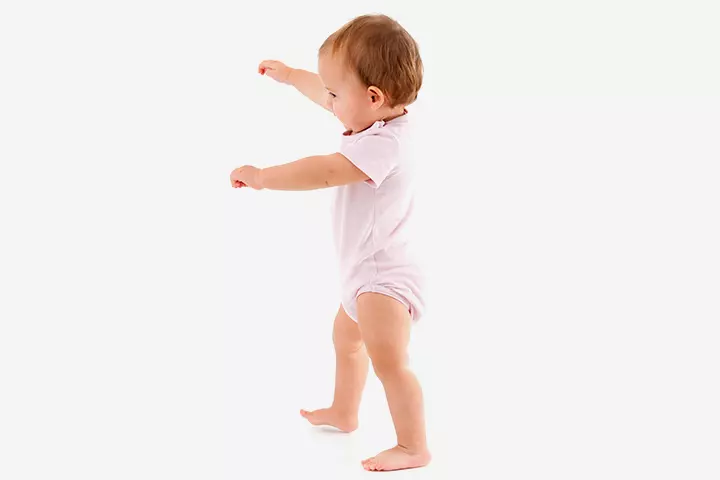
- Stands without any support and takes first steps
- Tries speaking 2 to 3 words like mama, dada
- Helps while you are dressing like pushing hands into sleeves
- Shows temper tantrums
- Develops sense of humor
Your baby will undergo an amazing transformation in the first year of life. He or she will have about tripled birth weight. Keep watching the baby growth stages. Also keep in mind that all babies grow at his or her pace. If you do not see any of the milestones of a baby month by month as stated, it is completely normal in a baby’s development. However, keep track of your baby’s growth milestones. If there is a vast difference in your baby’s milestones when compared to other babies of their age, such as inability to roll by six months or inability to crawl by ten months, consult your baby’s doctor.
Frequently Asked Questions
1. How does a baby’s communication and language skills develop during the fifth month?
During the fifth month, the baby begins to respond to their name, make squealing sounds, express anger through sounds, and produce vowel sounds such as “ah” or “goo” (5).
2. What can parents expect in terms of their baby’s social development during the sixth month?
At six months, the baby is able to recognize familiar faces and respond to emotions.They may also enjoy playing with others and start to show attachment to familiar people (6).
3. What types of cognitive development occur in a baby during the seventh month?
As per a 7-month-old baby’s development, they start to develop object permanence and can partially retrieve a hidden object. They also explore their surroundings through touch and mouth, and may attempt to reach for objects that are out of their reach (7).
4. How does a baby’s eating and digestion change during the eighth month?
At eight months, babies can sit up and pick up food with their hands; this causes a slight shift in nutrition and allows them to eat and digest soft, shredded, and well-cooked table foods. However, they may still have difficulty with large chunks, thin slices, or small-sized foods and require them to be tender-cooked and mashed (8).
5. How does a baby’s sleep pattern change during the tenth month?
By ten months, the baby’s night sleep increases to around eleven to twelve hours, with a rare need for an afternoon nap. They are more active during the day and may have more difficulty falling asleep at night due to increased mobility and exploration (9).
6. What should I do if my baby isn’t crawling by 12 months?
By 10-12 months, babies usually learn to crawl. But every child is different, so if your baby can turn sideways but can’t crawl, it might not be a concern. However, if the baby fails to achieve other growth milestones along with crawling, check with your baby’s doctor for timely intervention (4).
7. How can I encourage my baby’s speech development?
By 12 months of age, babies can speak two to three short rhyming words. However, you can encourage them to talk more by trying activities like peekaboo, interactive play, reading to your baby, singing songs, and imitating games (10).
Infographic: Growth Milestones – Baby Development Month By Month
Growth milestones are indicators of a baby’s healthy development and growth. These milestones encompass physical, cognitive, and social-emotional growth. The infographic below provides a list of milestones your baby may reach during the first 12 months. Keep this handy, so you can refer back to it to track your baby’s progress.
Some thing wrong with infographic shortcode. please verify shortcode syntax
Illustration: Baby Development Month By Month

Image: Dall·E/MomJunction Design Team
Personal Experience: Source
MomJunction articles include first-hand experiences to provide you with better insights through real-life narratives. Here are the sources of personal accounts referenced in this article.
i. Ten months of Everly.https://mamasbabysteps.wordpress.com/2014/06/04/ten-months-of-everly/
References
- Your baby’s growth and development – 1 month old.
https://www.pregnancybirthbaby.org.au/babys-growth-and-development-1-month-old - Your baby’s growth and development – 3 months old.
https://www.pregnancybirthbaby.org.au/babys-growth-and-development-3-months-old - Your baby’s growth and development – 6 months old.
https://www.pregnancybirthbaby.org.au/babys-growth-and-development-6-months-old - Your baby’s growth and development – 10 months old.
https://www.pregnancybirthbaby.org.au/babys-growth-and-development-10-months-old - Developmental milestones.
https://depts.washington.edu/dbpeds/Screening%20Tools/Devt%20Milestones%20Table%20(B-6y)%20PIR%20(Jan2016).msg.pdf - Social and emotional milestones at 6 months.
https://www.unicef.org/parenting/child-development/your-babys-developmental-milestones-6-months - Developmental Milestones: 7 Months.
https://www.healthychildren.org/English/ages-stages/baby/Pages/Developmental-Milestones-7-Months.aspx - Feeding Your 8- to 12-Month-Old.
https://kidshealth.org/en/parents/feed812m.html - 10 Month Old Sleep Schedule – Master it in 13 Easy Steps.
https://www.sleepadvisor.org/10-month-old-sleep-schedule/ - Supporting Language and Literacy Skills from 0-12 Months.
https://www.zerotothree.org/resource/supporting-language-and-literacy-skills-from-0-12-months/
Community Experiences
Join the conversation and become a part of our nurturing community! Share your stories, experiences, and insights to connect with fellow parents.
Read full bio of Dr. Elna Gibson
Read full bio of Rebecca Malachi
Read full bio of Rohit Garoo
Read full bio of Anindita Ghatak





